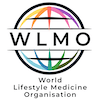“All this the world well knows but none knows well.” Shakespeare in Sonnet 129, was talking about love but this could easily apply to many human conditions that we share, like culture. Everyone working in and with Lifestyle Medicine knows that changing behaviour to achieve a better lifestyle is the ultimate goal for better health outcomes for communities, families and individuals. Yet we are seeing very little in the way of cultural competence commentary, education and training as part of Lifestyle Medicine movement, at least not in Australia.
We as lifestyle practitioners through our work with individuals and families intrude into their culture and affect their cultural values and ways of being. On the other side due to peoples’ cultural imperatives they resist lifestyle changes that they don’t understand to maintain their cultural identity and wellbeing. The ways forward are simple but are a career long process and it starts with the practitioners’ motivation and capacity to practice culturally competent Lifestyle Medicine.
A couple of reflections on culture, food and eating:
When I was a medical student, researchers just discovered effective treatments for helicobacter pylori, a stomach pathogen that was associated with gastritis, peptic ulcers and stomach cancer. It was also more common with certain cultural groups and how they eat. These groups eat communally. They share food. More specifically, they dip their hands, fingers, chopsticks, spoons and so on into communal plates, bowls, animal abdomens and other vessels and thus spread the bug to each other and their children. The question then and now is should we advise people to stop their eating habits and adopt more western habits of eating with individual plates with knives, forks and spoons?
Fast forward perhaps a decade. The mediterranean diet was a rage. We were shown pictures of fresh fruits, vegetables, grains, olive oil and seafood. Then we were shown how to cook them the mediterranean way – the dips, pickles, salads, pastas, breads, baked seafood, soups etc. What was taught and promoted to health care professionals and the public as the ideal diet was the mediterranean diet, not the principles underlying the diet. This has not changed that much or the message has been lost in real world translation. Should we continue to promote the mediterranean diet above all other traditional diets?
Patrician Crotty noted that there are two approaches to nutrition and health. The post-swallowing perspective of digestion, biochemistry, physiology and pathology related to food and nutrition; and the pre-swallowing perspective involving society, culture and behaviours related to food and nourishment. To understand and affect health outcomes through food and nutrition we need to get out of the museums, labs and medical libraries and into the real world, the pre-swallowing world, as well.
Food
“…for there is nothing either good or bad, but thinking makes it so.” Shakespeare’s Hamlet was commenting on how our thoughts keep us in a prison and maintain our inaction. There is no such thing as good or bad foods. Just as there is no such thing as a bad or good culture. It is because of our own culture and food habits as practitioners that we come to distinguish which foods are bad and which are better. It does require some effort to conceive the relationship between health, wellbeing and food beyond good/bad value systems. But it is this effort that will result in respectful and effective practice within and across cultures.
There is an abundance of food variety in Australia. This is due to a diverse migrant group coming to Australia over many decades; although the majority of migrants still come from the UK. More recently, Australia is blessed with the availability and promotion of indigenous foods. A diverse and multicultural society demands and can supply a diverse range of foods for everyone and anyone who cares to venture and experiment. The one group of professionals who should venture and experiment are the Lifestyle Medicine practitioners. We owe it to our patients and their families to know, to understand the food that our patients prefer and then to advise appropriately.
Cuisine
“What say you to a piece of beef and mustard?” Shakespeare recognised that some foods just go well together because many of us may have been brought up more rigidly in terms of what foods go with what other foods, events and occasions. We developed an inability to imagine otherwise. This occurs in all cultures.
A cuisine of a particular group can be defined as the characteristic manner of selecting foods, the style of preparing food and the attitudes and tastes a group brings to cooking. However, some caution is important when studying cuisines in order to make assumptions about what food an individual or family chooses, how they prepare the food and how they cook. Cuisines are an ideal which are not usually achieved in the context of life and living in multicultural Australia. Migrants have always found it difficult to find the raw and processed ingredients for their cuisines. More difficult is to find the time to prepare the meals. Preparing and cooking meals cannot be shared as it traditionally does in their home countries due to work and education commitments and the noticeable reduction in extended family size due to migration.
Even without these pressures that migrants find themselves facing in Australia, their food culture and habits are not necessarily homogeneous. In fact, most experts say that as a rule, they are not. Various personal identities come into play to vary people’s food habits like age, social class or occupation, geography, religion, gender and the migrants’ journey up to this point. Individual tastes have but a small role. Now more than ever in our multicultural society the ability to make a cultural assessment of individuals and their families is needed to provide effective behavioural change and to avoid stereotyping people’s food choices based on ethnicity.
Eating
“There is no art to see the mind’s construction in the face.” Here in Shakespeare’s MacBeth we are reminded that you cannot tell what a person is thinking by the way they look and behave. Further assessment is necessary.
The greatest flaw in cultural competence training is that it is cursory, superficial and focuses on people rituals, customs and heroes. True cultural competence seeks to understand and to develop skills to “see” cultural values. Cultural values explains a group’s ritual, customs and the heroes the group worships. More than this, cultural values explains a group’s traits, preferences and tendencies.
Animals feed and humans eat. Eating is a cultural event and we do it everyday from the age of about 6 months. For example:
A family is about to sit down to eat a meal in the evening. Daughter is told to fetch her father who is resting after work. Mother has transferred the cooking she has done with her daughter and son into bowls and plates. She asks Father when he arrives in the kitchen to carry the rice cooker out to the dining table. She asks Son to bring out the bowl of hot soup. Daughter is already setting the table with bowls and chopsticks. Daughter comes back to the kitchen to make the final preparations for a pot of green tea and a pot for warm water.
As the dishes are arranged within reach of each family member, Son scoops rice into bowls and gives the bowls to Father first, then Mother, then Daughter and then himself. They sit and wait for Father to take the first mouthful of rice and food. Then they start eating and talking about their day.
As they are eating, Mother routinely gives morsels of food to Daughter and Father by placing them in their respective bowls when they seem to have slowed down. At the end of the meal a piece of meat is left on the plate but no one touches it. Father instructs Son to finish it off and he readily complied.
Cuisine
The cultural dimensions, promoted by Hofstede, that inform the observers of this family’s cultural values include collectivist, power distance, achievement orientation, uncertainty avoidance and time orientation. All these cultural dimensions can be inferred in this family’s interaction. Let’s take a dimension that we are all familiar with – collectivist dimension. Collectivist cultures value group harmony. For a group to be harmonious each member is obligated to fulfil their roles and function to the group. Going outside these norms will bring shame to the group. Therefore group behaviour is governed by shame. Individuals exist for and through the group.
The sharing of food, food preparation tasks, dining room organisation and then the acts of who serves the rice, who eats first, how much each family member eats and who cares for the children during the meal ties into how a family keeps harmony in the household. There are many threats to this situation in the Australian context which is in general an individualist culture. In terms of nutrition, a change in diet for one of the members due to let’s say a diagnosis of diabetes would upset the status quo. Families do adapt and cope but they would do better if they were understood and their domestic organisation supported.
Little attention has been given to the domestic and household process when assessing an individual and family nutrition. As demonstrated here in a very simple thought exercise, the domestic behaviours around food, food preparation and eating tells us a lot about this family’s food culture and cultural values. The outcome of a nutritional plan may depend on the dynamics of a families domestic organisation. Therefore, the Lifestyle Medicine practitioners should not neglect domestic processes when trying to affect nutritional behavioural change.
One last word from Shakespeare from Twelfth Night, “Do you think because you are virtuous, that there shall be no more cakes and ale?”
This article has been written for the Australasian Society of Lifestyle Medicine (ASLM) by the documented original author. The views and opinions expressed in this article are solely those of the original author and do not necessarily represent the views and opinions of the ASLM or its Board.



